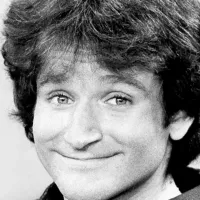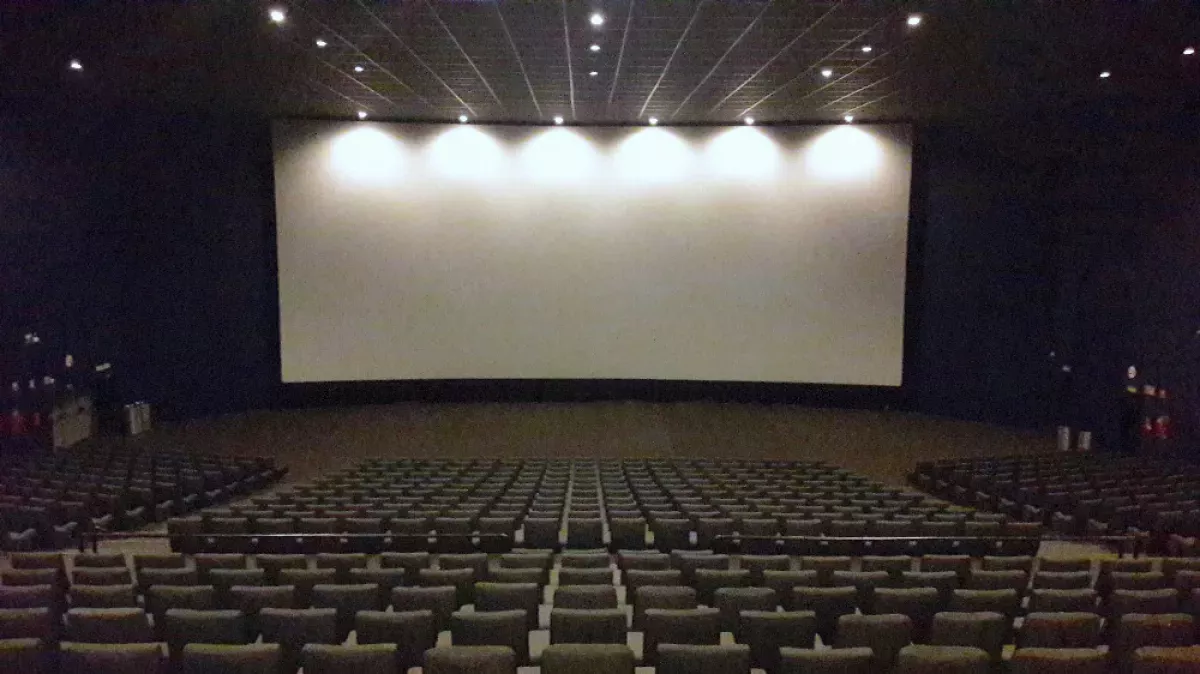A movie theater, or cinema, is a business with auditoriums for public film viewings. Patrons purchase tickets to attend these commercial operations, commonly referred to as 'the movies,' 'the big screen,' or simply 'theater.' These establishments are designed for entertainment, offering a shared experience of watching films.
March 1900: Émile Reynaud Ends Pantomimes Lumineuses Screenings
In March 1900, Émile Reynaud concluded his Pantomimes Lumineuses animated movie screenings, which had been running since 1892 at the Musée Grévin in Paris, using his Théâtre Optique system. He presented over 12,800 shows to more than 500,000 attendees, featuring programs like Pauvre Pierrot and Autour d'une cabine.
1901: Construction of l'Hôtel du Syndicat CGT
In 1901, l'Hôtel du Syndicat CGT was built in Aniche, France. It later became L'Idéal Cinéma.
November 1905: L'Idéal Cinéma Shows First Film
On November 23, 1905, L'Idéal Cinéma in Aniche, France, which was built in 1901 as l'Hôtel du Syndicat CGT, screened its first film.
1905: Rise of Nickelodeons
Around 1905, small and simple theaters, known as nickelodeons, began to flourish in the United States. They typically charged five cents for admission.
August 1908: Korsør Biograf Teater Opens
In August 1908, the Korsør Biograf Teater in Korsør, Denmark, opened. It is the oldest known movie theater still in continuous operation.
1915: Decline of Nickelodeons
Around 1915, the popularity of nickelodeons, which had flourished since about 1905, began to decline in the United States.
1918: Gasthaus Sello Becomes Pankower Lichtspiele
In 1918, the Gasthaus Sello in Pankow (Berlin), where Max Skladanowsky and his brother Emil had previously demonstrated their motion pictures with the Bioscop, began operating as a full-time movie theater named Pankower Lichtspiele.
1922: Princess Theatre Features Stadium Seating
In 1922, the Princess Theatre in Honolulu, Hawaii, introduced "stadium seating," featuring sharply raked rows of seats to provide patrons with a clear view over the heads of those in front of them.
1925: Pankower Lichtspiele Rebrands as Tivoli
In 1925, the Pankower Lichtspiele movie theater in Berlin, previously known as Gasthaus Sello, was rebranded as Tivoli.
1940: RCA Develops Fantasound Interlock System
In 1940, RCA developed the Fantasound interlock system for Disney's Fantasia.
February 1953: James Mage Premieres Triorama Program
In February 1953, James Mage premiered his Triorama program, using his 16 mm 3D Bolex system. The program featured four short films: Sunday In Stereo, Indian Summer, American Life, and This is Bolex Stereo.
September 1953: Theatrical 3D Craze Starts to Decline
In August and September 1953, the first decline in the theatrical 3D craze started.
1957: Elgin Theatre Becomes First Two-Screen Theater
In 1957, the Elgin Theatre in Ottawa, Ontario, Canada, became the world's first venue to offer two film programs on different screens, converted by Canadian theater-owner Nat Taylor.
1963: American Multi-Cinema Pioneers the Multiplex
In 1963, Stanley Durwood of American Multi-Cinema (now AMC Theatres) is credited with pioneering the multiplex in the United States after realizing that he could operate several attached auditoriums with the same staff needed for one through careful management of the start times for each movie. Ward Parkway Center in Kansas City, Missouri had the first multiplex cinema in the United States.
1964: Roxy Cinema Divided into Multiple Screens
In 1964, Stanley Durwood divided his Roxy cinema to create two or three screens.
1967: British Government Launches Mobile Cinema Units
In 1967, the British government introduced seven custom-built mobile cinema units as part of the Ministry of Technology's campaign to raise standards. These futuristic-looking, 27-seat cinema vehicles were built on a Bedford SB3 chassis with a custom Coventry Steel Caravan extruded aluminum body.
1972: Sol Cinema Caravan Conversion
In 1972, the caravan that would become the Sol Cinema was manufactured.
November 1988: Studio 28 Reopens as Megaplex
In November 1988, Studio 28 in Grand Rapids, Michigan, reopened as a megaplex with 20 screens and a seating capacity of 6,000, marking the first U.S. megaplex based on an expansion of an existing facility.
1993: Demolition of L'Idéal Cinéma Building
In 1993, the building that housed L'Idéal Cinéma in Aniche, France, was demolished.
1994: Tivoli Movie Theater Closes
In 1994, the Tivoli movie theater in Berlin, formerly known as Gasthaus Sello and Pankower Lichtspiele, closed its doors.
1995: Carmike was the largest chain in the United States.
In 1995, Carmike was the largest movie theater chain in the United States.
1995: Centre Culturel Claude Berri Opens with New Movie Theater
In 1995, the "Centre Culturel Claude Berri" was built in Aniche, France, incorporating a new movie theater called the Idéal Cinéma Jacques Tati.
1995: Eden Theater Closes
In 1995, the Eden Theater in La Ciotat, France, a claimant for the title of the earliest movie theater, closed.
2004: Decline in ticket sales in the US.
Between 2004 and 2013, there was an 11% fall in the number of movie tickets sold in the US.
2006: Pew Media survey results on movie watching preferences.
A Pew Media survey from 2006 found that the relationship between movies watched at home versus at the movie theater was in a five to one ratio and 75% of respondents said their preferred way of watching a movie was at home, versus 21% who said they preferred to go to a theater.
May 2008: Datasat Digital Entertainment Purchases DTS's Cinema Division
In May 2008, Datasat Digital Entertainment purchased DTS's cinema division.
2008: Cabiria Cine-Cafe Opens as Smallest Purpose-Built Cinema
In 2008, Renata Carneiro Agostinho da Silva built the Cabiria Cine-Cafe in Brasília DF, Brazil, which measures 24 m² and has a seating capacity of 18, making it the smallest purpose-built cinema.
2009: D-Box Motion Seat System Released to Cinemas
In 2009, D-Box Technologies first released its motion seat system to cinemas, with Fast & Furious being the first feature film supporting the system.
2009: Increased Interest in 3D Film
In 2009, movie exhibitors showed increased interest in 3D film, leading to a rise in the number of 3D screens in theaters. The availability of 3D movies encourages exhibitors to adopt digital cinema and provides a way for theaters to compete with home theaters. One incentive for theaters to show 3D films is that although ticket sales have declined, revenues from 3D tickets have grown.
2010: Revenue increase in Canada compared to 2012.
In 2010, Canada's movie theater industry experienced revenue growth that lead to a total operating revenue of $1.7 billion in 2012, representing an 8.4% increase.
2010: RealD Expects 15,000 3D Screens Worldwide
In 2010, The RealD company expects 15,000 screens worldwide.
2010: Cabiria Cine-Cafe Listed in Guinness World Records
In 2010, the Cabiria Cine-Cafe was mentioned in the Guinness World Records as the smallest purpose-built cinema.
2012: Movie theater industry revenue in Canada.
In Canada, the total operating revenue in the movie theater industry was $1.7 billion in 2012, which was an 8.4% increase from 2010, mainly due to growth in box office and concession revenue.
2013: Box office revenue increase in the US.
Between 2004 and 2013, even though the number of tickets sold fell by nearly 11%, box office revenue in the US increased by 17% due to increased ticket prices.
2013: Eden Theater Re-opens
In 2013, the Eden Theater in La Ciotat, France, which had closed in 1995, re-opened.
2013: Average movie ticket price in the U.S.
In 2013, the average price for a movie ticket in the United States was $8.13.
2014: Concerns over simultaneous theatrical and on-demand releases.
In 2014, the movie theater industry raised concerns over the practice of releasing films in theaters and via on-demand streaming on the same day, as well as the rise in popularity of the Netflix streaming service.
2015: Online and automated kiosk ticket sales.
As of 2015, some movie theaters started selling tickets online and at automated kiosks located in the theater lobby.
2015: Total number of screens in the United States.
In 2015 the United States had a total of 40,547 movie screens.
2015: Sol Cinema Featured in Lenovo Advert
In 2015, the Sol Cinema, a solar-powered mobile cinema in the UK, was featured in a Lenovo advert for the launch of a new tablet.
2016: Projected number of screens in China.
It was expected that China would have almost 40,000 movie screens in 2016.
2016: End of IMAX Projection Booth Observation at National Science and Media Museum
Until 2016, visitors to the IMAX cinema attached to the National Science and Media Museum in Bradford, West Yorkshire, England, United Kingdom, could observe the IMAX projection booth via a glass rear wall and watch the large format films being loaded and projected.
January 2025: D-Box Announces Seat Installations
In January 2025, D-Box Technologies stated that it had over 23,000 seat installations at 1,000 screens worldwide.
July 2025: Exhibitors Consider Joint Brand for PLFs
In July 2025, it was reported that a group of exhibitors were considering establishing a joint brand or certification mark for their PLFs (Premium Large Formats) to better compete with IMAX, citing an increasingly undue presence by the company in film marketing.
Mentioned in this timeline
IMAX is a proprietary system utilizing high-resolution cameras film formats...
India officially the Republic of India is a South Asian...
Germany officially the Federal Republic of Germany is a Western...
China officially the People's Republic of China PRC is an...
France officially the French Republic is primarily located in Western...

Dallas is a major city in Texas United States and...
Trending

5 months ago Robin Williams' impact: Comic Strip memories, promposal help, and wacky awareness day.

30 days ago Benicio Del Toro and Kristen Stewart Honored at SFFILM 2025 Awards Night

1 month ago Sofia Coppola Honored at MoMA Film Benefit with Stars Like Kirsten Dunst Present.

5 months ago Buttigieg Warns Democrats: No Return to Status Quo Post-Trump Presidency in 2028.

1 month ago Ubisoft's Anno 117 includes AI art placeholder; Fans react negatively.
17 days ago CD Projekt Dashes Cyberpunk 2077 Anniversary Teaser Hopes, Confirms No New Content
Popular

Tucker Carlson is an American conservative political commentator known for...

Candace Owens is an American conservative political commentator and author...

XXXTentacion born Jahseh Dwayne Ricardo Onfroy was a controversial yet...

Ben Shapiro is a prominent American conservative political commentator media...

William Franklin Graham III commonly known as Franklin Graham is...

Bill Gates an American businessman and philanthropist revolutionized personal computing...
